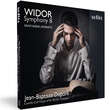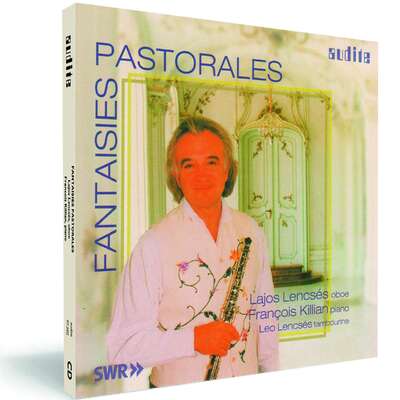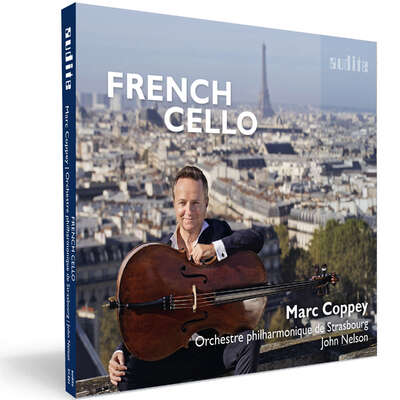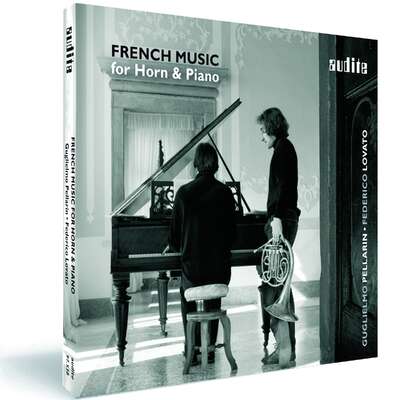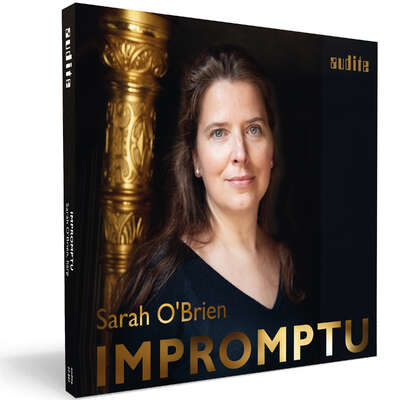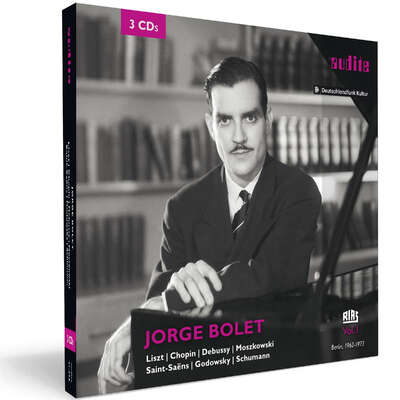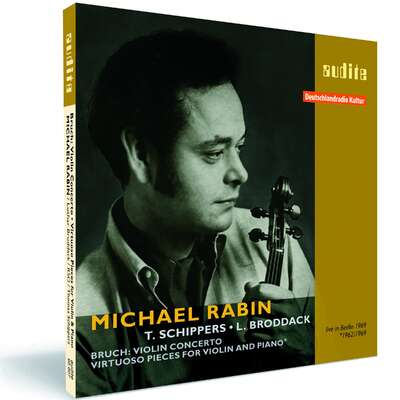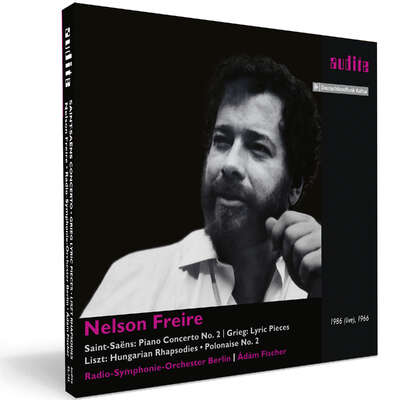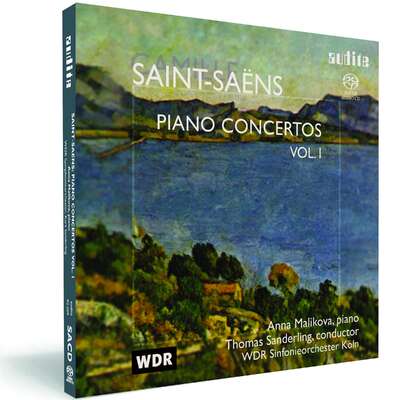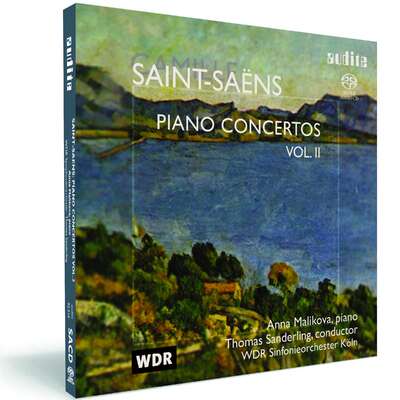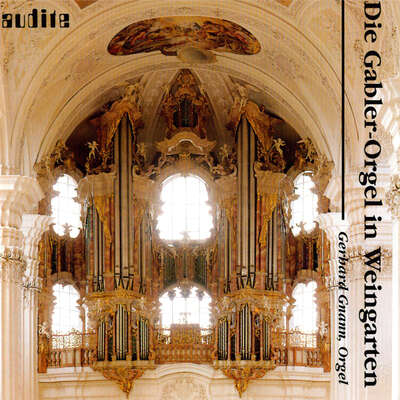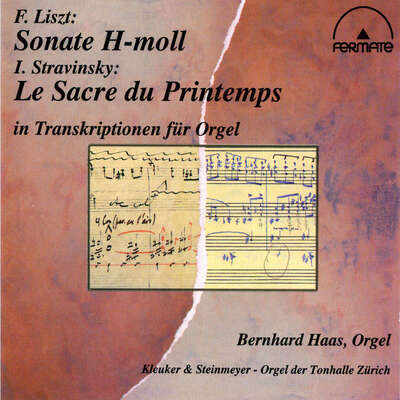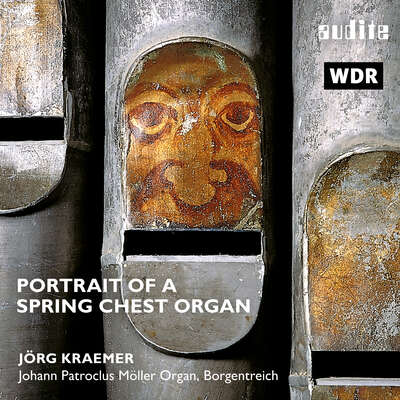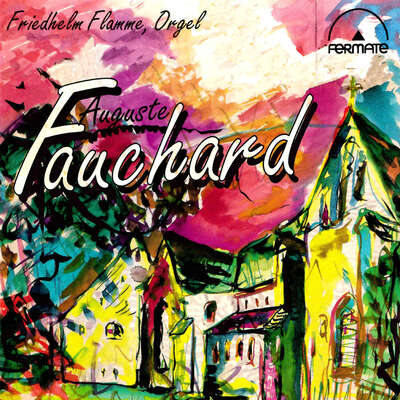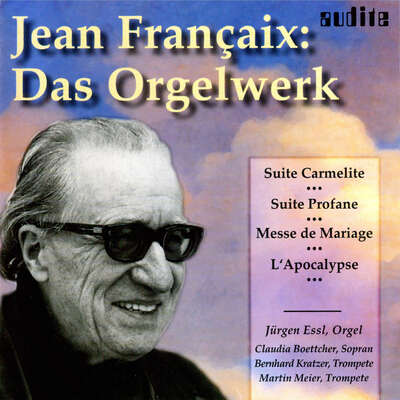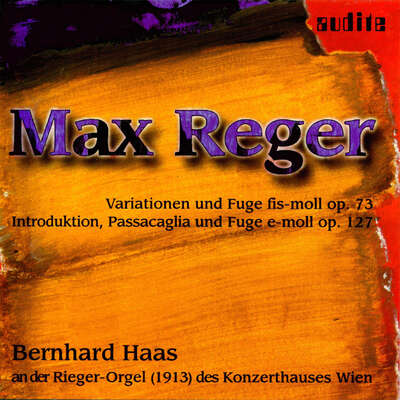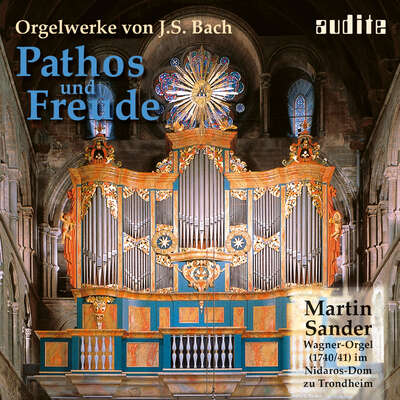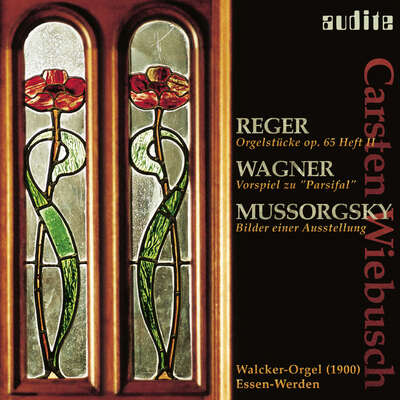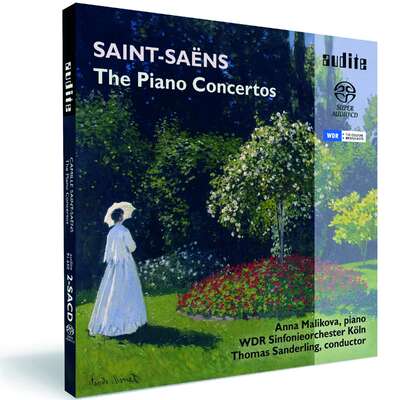
Auto-Rip
Das komplexeste Werk Widors in der Klangästhetik einer Cavaillé-Coll-Orgel mit einem der wichtigsten Organisten der Gegenwart: Ein klingendes Bekenntnis zur französischen Tradition.mehr
"Dupont durchmisst Widors knapp 50-minütiges sinfonisches Schwergewicht [...] mit Verve und durchweg straffem Tempo [...], erweist sich als versierter „Regisseur“ mit instinkthafter Sicherheit für nuancenreich-ausdrucksstarke Wirkungen." (Neue Westfälische)
Titelliste
Diesen Bonustrack erhalten Sie ausschließlich als Download!
Details
| Jean-Baptiste Dupont plays Widor: Symphony No. 8 | |
| Artikelnummer: | 97.774 |
|---|---|
| EAN-Code: | 4022143977748 |
| Preisgruppe: | BCA |
| Veröffentlichungsdatum: | 5. März 2021 |
| Spielzeit: | 57 min. |
Zusatzmaterial
Informationen
Jean-Baptiste Dupont zählt zu den wichtigsten Organisten der Gegenwart. Sein künstlerisches Können spiegelt sich in seinen internationalen Wettbewerbserfolgen und seiner weltweiten Konzertkarriere.
Ausgebildet in der französischen Orgeltradition sowohl in Interpretation als auch Improvisation vereint seine neue Aufnahme von Widors 8. Orgel-Symphonie diese Tradition mit der Klangästhetik einer Cavaillé-Coll-Orgel: Das Instrument in Saint-Sernin (Toulouse) ist wie gemacht für das komplexeste Werk Widors, der bekannte, dass er ohne die Hörerfahrung der Instrumente von Cavaillé-Coll keine Orgelmusik geschrieben hätte.
Jean-Baptiste Dupont ist fest verwurzelt im Erbe der französischen Musiktradition. Seine weitreichende Expertise als Improvisator führt zu einem besonderen Bewusstseinszustand im Umgang mit Musik: Bei der Interpretation von Repertoirewerken erfasst er die kreativen Strukturen des Werks in der Analyse besonders sorgfältig, im Moment der Aufführung erlebt er sie wie ein Improvisator authentisch nach - der kreative Prozess des Komponisten wird beim Spielen zu seinem eigenen.
Hören Sie eines der bekanntesten französischen Orgelwerke an einer französischen Orgel, gespielt von einem französischen Organisten - ein klingendes Bekenntnis zur französischen Tradition!
Besprechungen
Classica – le meilleur de la musique classique & de la hi-fi | N° 242 - Mai 2022 | Aurore Leger | 1. Mai 2022
Sur l'orgue de Saint-Sernin, dont il [Jean-Baptiste Dupont] est familier, on admire l'aisance avec laquelle, tel un dompteur de fauve, il agite les masses sonores. [...] noble, incisif et chaloupé. Mehr lesen
Singende Kirche - Zeitschrift für katholische Kirchenmusik | Jg. 68 - Heft 3 / September 2021 | Ines Schüttengruber | 1. September 2021
Jean-Baptiste Dupont legt eine beachtliche, ja herausragende, Aufnahme vor. [...] Sie erscheint farbig, technisch brillant und abwechslungsreich, höchst gelungen.Mehr lesen
Crescendo Magazine | 10 août 2021 | Christophe Steyne | 10. August 2021 | Quelle: https://www.cres... Huitième Symphonie de Widor : interprétation cursive et décantée, à Saint-Sernin
L’interprétation de Jean-Baptiste Dupont se caractérise par ses tempi mobiles, ses phrasés agiles et subtils, ses couleurs poétiques. L’Adagio coule comme dans un songe.Mehr lesen
www.musicweb-international.com | Monday July 19th | Marc Rochester | 19. Juli 2021 | Quelle: http://www.music...
The famous Cavaillé-Coll of St Sernin and Widor: a tantalising combination! However, that promise takes a very long time to be fulfilled and,Mehr lesen
Jean-Baptiste Dupont seems lacklustre at the start of the Symphony, and the recording lacks edge. Perhaps the fault might be Widor’s – the opening allegro risoluto is not one of his most memorable creations – but while Dupont is piling on the stops, it all feels a little too stodgy for my taste. But the second movement also fails to impress; Dupont’s pacing feels unnatural, and what could be a magical solo flute, is marred by a poor registration balance, with the pedals very heavy and the accompaniment figurations too vague. Things start to look up with a chatteringly animated third movement, delivered with some nicely spiky articulation, while with the fourth movement Variations, Dupont finally settles into his stride. He draws some glorious sounds from this glorious instrument, paces the music well, and conveys a strong sense of the movement’s architecture. The Adagio which follows finds this historic and fabulous instrument more obviously in its element, with richly shimmering strings and deliciously silvery montres giving weight to the stronger passages. So far, however, nothing either Dupont or this organ have done will win many converts to Widor’s Eighth Symphony. However, the saving grace of the work is the Final, which in his booklet notes Dupont describes as “the most organistic movement of the Symphony”. Here, at last, everything comes together in a welter of sumptuous sound and gloriously agile fingerwork, with the thundering pedal as the work reaches its climax magnificently captured by the engineers.
The banner heading on the back of the CD case describes the Widor as his “most complex work”. That may well be so, and its complexity is countered on this recording by following it with the gentle Prière from the 6 Pièces by Ropartz. A dreamy, sometimes meandering piece, it gives us a pleasing tour through the organ’s more tranquil and expressive character stops.
Closing the CD with the organ solo introduction from Saint-Saëns’s late (and, it has to be said, largely uninspiring) work for organ and orchestra, Cyprès et Lauriers, seems an odd decision. It is a grim, at times tragic, piece, which, after an imposing start turns into a shapeless solo which leads up to another big climax and then descends into an abyss of nothingness. After this, the orchestra would normally join in and steer the piece to some sort of logical conclusion but without that ending, the piece rather hangs in mid-air. As a showcase for the instrument, it has its purpose, but there are many more appropriate ways of ending a CD than this, even if the choice of Cyprès was made as the recording marked the centenary of its composition.
Choir & Organ | 13th July 2021 | Rupert Gough | 13. Juli 2021 | Quelle: https://www.rhin...
This recording is clearly a personal passion for Dupont, who was born and studied in Toulouse (and who won the 2009 St Albans ImprovisationMehr lesen
de Orgelvriend | Juli / August 2021 | Willem De Vries | 1. Juli 2021
Dupont speelt gedreven en legt, zoals de maître Widor het ooit stelde, het orgel zijn 'wil' op. Hij weet de klankmogelijkheden van het instrument zeer goed te benutten. In zijn registratiekeuze en transparante spel raakt de grote lijn niet verloren. De gelaagdheid in klank en de pianistische vaardigheid creëren een reliëf waarin de luisteraar naar het detail wordt gelokt. Mehr lesen
ClicMag | 28.06.2021 | Bertrand Abraham | 28. Juni 2021 | Quelle: https://www.clic...
Interprétation animée, enlevée qui ne s'appesantit jamais, ne cède jamais, dans le lyrisme, à des épanchements faciles. L'interprète porte et « dirige » dans tous les sens du terme cette musique.Mehr lesen
www.ResMusica.com | Le 22 juin 2021 | Frédéric Muñoz | 22. Juni 2021 | Quelle: https://www.resm... Un Widor éblouissant par Jean-Baptiste Dupont à l’orgue de Saint-Sernin de Toulouse
Cet orgue est actuellement au meilleur de sa forme, apte à un enregistrement de grande qualité. La prise de son globalise très avantageusement les sonorités dans l’acoustique précise de Saint-Sernin. Jean-Baptiste Dupont fréquente régulièrement ce lieu et s’est complètement imprégné de la pâte sonore de ce témoin privilégié de l’art de la facture symphonique. Il en connait tous les secrets en matière d’équilibres, de dynamique et de musicalité. Aussi se laissera-t-on porter par les diverses atmosphères générées au cours des divers mouvements. Mehr lesen
La Tribune de l'Orgue | Juin 2021 | 1. Juni 2021
L'interprète [...] connaît de toute évidence à fond la musique qu'il nous présente, et la réalise avec une technique époustouflante.Mehr lesen
Audio | 6/21 | Otto Paul Burkhardt | 1. Juni 2021
Es gibt digitale, transportable Touring-Orgeln à la Cameron Carpenter. Doch nur stationäre Instrumente können die authentische Erfahrung atmenderMehr lesen
Preis der Deutschen Schallplattenkritik | Bestenliste 2/2021 | Guido Krawinkel | 14. Mai 2021 | Quelle: https://www.scha... PdSK Bestenliste 2/2021
Mit einer Spieldauer von – je nach Fassung – bis zu einer Stunde ist sie die längste und komplizierteste aller Orgelsymphonien von Widor: seineMehr lesen
A Tempo - Das Lebensmagazin | Mai 2021 | Thomas Neuerer | 1. Mai 2021 Mit allen Registern
Duponts Interpretation ist historisch informiert, nimmt sich aber auch Freiheiten, die einem Kenner der Werke, wie er es ist, zugestanden werden können. Jeder Satz, jeder Takt ist ein Genuss; es ist herrlich erleben zu können, wie Dupont die Klanglichkeit der Orgel geradezu übersinnlich auskostet.Mehr lesen
www.pizzicato.lu | 26/04/2021 | Guy Engels | 26. April 2021 | Quelle: https://www.pizz... Großes Instrument, große Musik
Mit Charles-Marie Widor begegnen wir auf dieser Aufnahme einem der Protagonisten der französischen Orgelsymphonik des 19. und 20. Jahrhunderts. DieMehr lesen
Viele Werke dieser Zeit wurden für die mächtigen Cavaillé-Coll-Orgeln geschrieben. Auf der Cavaillé-Coll-Orgel in Saint-Sernin in Toulouse entstand diese Aufnahme mit Jean-Baptiste Dupont.
Neben den rein technischen Fallstricken, die hinter der Orgel in Toulouse lauern – Jean-Baptiste Dupont beschreibt sie im Booklet – lauert ganz allgemein die Gefahr, sich von der Macht, der Klangwucht des Instruments verführen zu lassen.
Bei Jean-Baptiste Dupont muss man sich keine Sorgen machen. Er beherrscht das Instrument, nicht umgekehrt. Dupont schafft es, den ganz großen Bogen zu schlagen, von den initialen, mächtigen Akkorden bis hin zum festlichen Schluss.
Dazwischen liegen insgesamt sechs Sätze, die ein Füllhorn an Klangfarben und auch Emotionen bieten. Jean-Baptiste Dupont verführt uns mit poetischen Klängen im Moderato, zeigt sich leichtfüßig und verspielt im dritten Satz, unterstreicht seine Sensibilität für Formen und Stile in den Variationen des 4. Satzes.
Orgelsymphonien sind vielleicht nicht jedermanns Sache. Bei Jean-Baptiste Dupont ist man in guten Händen, sich auf differenzierte und einfühlsame Weise auf dieses spannende Repertoire einzulassen.
----
With Charles-Marie Widor we have one of the protagonists of French organ symphonic music of the 19th and 20th centuries. In a sense, the organ left the gallery, the liturgical space, and became independent as a concert instrument.
Many works of this period were written for the mighty Cavaillé-Coll organs. It was on the Cavaillé-Coll organ in Saint-Sernin in Toulouse that this recording was made with Jean-Baptiste Dupont.
Besides the purely technical pitfalls that lurk behind the organ in Toulouse – Jean-Baptiste Dupont describes them in the booklet – there is the general danger of being seduced by the power, the sonic force of the instrument.
With Jean-Baptiste Dupont, there is no need to worry. He dominates the instrument, not the other way around. Dupont manages to create the very big arch, from the initial, powerful chords to the festive conclusion.
In between are a total of six movements that offer a cornucopia of tonal colors and also emotions. Jean-Baptiste Dupont seduces us with poetic sounds in the Moderato, shows himself light-footed and playful in the third movement, underlines his sensitivity for forms and styles in the variations of the fourth movement.
Organ symphonies may not be everyone’s cup of tea. With Jean-Baptiste Dupont, one is in good hands to engage with this exciting repertoire in a differentiated and sensitive manner.
Neue Westfälische | Montag, 19. April 2021 | Christoph Schulte im Walde | 19. April 2021
Widors Achte aus Toulouse
Straff und schillernd
Dupont durchmisst Widors knapp 50-minütiges sinfonisches Schwergewicht [...] mit Verve und durchweg straffem Tempo [...], erweist sich als versierter „Regisseur“ mit instinkthafter Sicherheit für nuancenreich-ausdrucksstarke Wirkungen. Mehr lesen
www.orgelnieuws.nl | 12 maart 2021 | Bert Rebergen | 12. März 2021 | Quelle: http://www.orgel...
Dupont mag zijn majesteitelijke meervoud van mij zonder blozen bezigen. Deze opname verdient het om bekroond te worden!Mehr lesen
